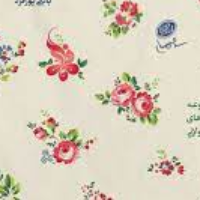Analyzing the Principles of Visual Perception in Decorative Kufic Script with the Emphasis on the Principles of Figure-Ground, Continuity and Common Fate; Case Study: The Inscription of Davazdah Imam Mausoleum of Yazd)
The Davazdah Imam Mausoleum of Yazd, built-in 429 A.H., is one of the rare historical buildings in the Islamic world, which is very famous among Islamic architecture researchers worldwide. The Grivar inscription of this building shows the Ayatul Kursi verse in Moashaq Moshajar script in azure color on a plaster bed. Gestalt theory of visual perception is one of the influential theories of the 20th century in visual arts, which focuses the process of visual perception on a unified vision and the integrity of the work of art, and proposes 10 principles of visual perception. Due to the wideness of the Gestalt concept, no direct translation has been made in any language. This word means "form" and "shape" in German. In English, it is called "organized whole", "supposition", or "formation". In the Persian language, it can be equated to concepts such as "shape", "form", "structure", and "wholeness". It should be added immediately that none of these words alone fully express the meaning proposed by Gestalt. By watching a collection to perceive and feel it, the human mind unconsciously analyzes and categorizes its components and simultaneously thinks about form and content. It is the basis of the principles of Gestalt visual perception, which is the scientific basis of the present research for the visual analysis of the mentioned inscription. Several examples of works of art can be seen where artists have unconsciously used the principles of Gestalt perceptual organization in their creation without being aware of these rules. The inscription of the Twelve Imams of Yazd is also one of these works because its visual beauty and richness result from the use of good Gestalts by its designer (s), even when these rules were not discovered. Perhaps, in the analysis of how to perceive the visual space of an inscription and the criteria of its formation, the most appropriate approach is the Gestalt theory, which was used for evaluation in this research, and by conducting studies on it, the extent of utilization of these principles can be achieved. The current research was conducted through library and field studies, and the method used was descriptive and analytical. To collect the images of the inscription under the dome of the Davazdah Imam Mausoleum of Yazd, first, the entire inscription was photographed, despite being at a high height compared to the ground and its particular problems. Then, according to the photos, the software recreated this inscription from the beginning to the end, which is one of the long inscriptions. Some parts of the inscription were worn and damaged, which made it difficult to perform accurately. Subsequently, the visual analysis of the recreated design based on Gestalt principles began, and due to the diversity of these principles and the visual complexity of the inscription components, only some of these principles were focused on. This research tries to adapt three essential principles from the 10 principles of Gestalt psychology of sensation and perception in the mentioned inscription and seeks to answer these questions: - To what extent and how have the designers used the principles of figure-ground, continuity, and common fate to design the magnificent inscription of the Twelve Imams of Yazd? - What is the Pragnanz degree of applying each of these principles in the design of the examined inscription? The results of this research showed that the charm and beauty of the Grivar inscription of the Davazdah Imam Mausoleum of Yazd is the result of the use of artistic taste and the proper application of different Gestalts in the whole and its parts; however, this was done unintentionally and without knowing the scientific and psychological foundations of this theory. Considering this inscription's breadth and complexity, it was impossible to examine all the principles and rules of Gestalt in this study. Undoubtedly, the intensity of other possible Gestalts affected the quality of the overall perception received from scrutinizing the inscription. However, the result obtained from this research showed that the visual richness in the inscription results from applying the Gestalt of figure-ground, continuity, and common fate to a large degree, which remarkably created its substantial and satisfactory Pragnanz.
- حق عضویت دریافتی صرف حمایت از نشریات عضو و نگهداری، تکمیل و توسعه مگیران میشود.
- پرداخت حق اشتراک و دانلود مقالات اجازه بازنشر آن در سایر رسانههای چاپی و دیجیتال را به کاربر نمیدهد.



